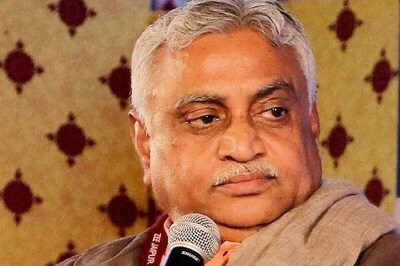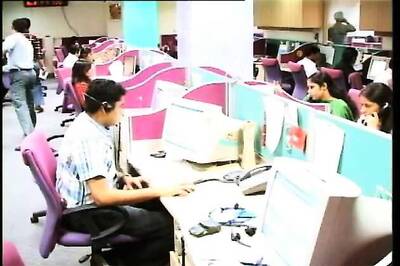
views
The world’s biggest democracy – housing over 1.4 billion individuals, hailing from a multitude of cultures and religions – has witnessed immense socioeconomic progress since its independence in 1947. As we near the commemoration of our 100th year of independence in 2047, the remarkable image of a “Viksit (developed) Bharat” is right around the corner, with the Government of India working hard in garnering opportunities for its citizens to contribute to the country’s economic success.
Apart from economic resilience – factored in through a high Gross Domestic Product (GDP) and a low national debt – a developed nation is recognised for its high quality of life measured through factors such as quality education, universal healthcare, robust transportation systems, and excellent infrastructural capacities. To accomplish these endeavours, the Central government has worked extensively on revitalising the education and healthcare systems while roadways and transportation have seen an immense thrust (India has witnessed nearly a 60 per cent increase in the development of national highways over the past decade). Simultaneously, the logistics industry, renowned as the backbone of a globalised economy, is at the cusp of receiving a comprehensive facelift in the country, in tandem with the Viksit Bharat manifesto.
India is projected to become a $26 trillion economy by 2048, and with its aggregated logistics costs valued between 7.8 per cent to 8.9 per cent of GDP (for FY2021-21), along with the incentive to thrust merchandise exports to $1 trillion by 2030, the country is anticipating a massive expansion of the logistics and freight sectors within the next two decades.
Contribution of the Logistics Sector
The Indian freight and logistics market has witnessed remarkable growth in the past decade, with the market projected to reach $484.43 billion by 2029, particularly due to the extensive adoption of technological advancements. The sector, currently valued at $317.26 billion, plays a crucial role in the Indian economy, contributing to 14.4 per cent of GDP and employing over 20 million people. Further, India’s ranking on the World Bank’s Logistics Performance Index has improved by six positions, ranking 38th out of 139 countries – suggestive of the consistent efforts through nationwide initiatives like the PM Gati Shakti National Master Plan for infrastructure development, the National Logistics Policy, and advancements in technology and infrastructure.
As India embarks on executing its ideology of a Viksit Bharat, government efforts at the national level have immensely expedited India’s drive towards building a resilient logistics hub.
Government-centric Initiatives to Bolster Logistics
While roads dominate with a 73 per cent market share, rail, water, and air lag at 18 per cent, 5 per cent, and 5 per cent respectively. To address these challenges, the Central government has undertaken a plethora of initiatives, envisioning a resilient logistics market to facilitate the reliant manufacturing sector.
In recognition of the critical role that logistics infrastructure plays in economic development, the Central government launched the PM Gati Shakti National Master Plan (NMP) in 2021 – which focuses on enhancing multimodal connectivity infrastructure across various economic zones within the country’s major transportation sectors. The NMP also serves as a digital platform, integrating existing infrastructure schemes such as Bharatmala (roadways), Sagarmala (ports and waterways), and UDAN (regional air connectivity). This strategic focus has yielded optimistic outcomes, with India’s port turnaround time reaching an impressive 0.9 days, surpassing performance in developed economies like the USA, Australia, and Singapore, according to the World Bank’s Logistics Performance Index Report 2023.
To address logistics bottlenecks and enhance efficiency, the government is implementing a multi-pronged approach. One key initiative involves developing a network of 35 multimodal logistics parks across the country under the Bharatmala Pariyojana program with a total investment of nearly Rs 46,000 crore. These parks will serve as regional hubs for consolidating and distributing cargo across various industrial and agricultural centres, consumer markets, and export-import gateways like seaports, further streamlining logistics operations and contributing to a more competitive Indian economy.
India’s Northeastern Region (NER) – strategically positioned along a 5,812 km international border with China, Bhutan, Myanmar, Bangladesh, and Nepal – presents a unique gateway for trade and fostering connections with East and Southeast Asia. To address the challenges of connectivity and logistics infrastructure in the region, the PM Development Initiative for North Eastern Region (PM-DevINE) was launched in 2022, which focuses on the region’s infrastructural needs, fully funded by the Centre.
Additionally, recognising the logistics sector as infrastructure and permitting 100 per cent Foreign Direct Investment (FDI) unlocks a multitude of fiscal incentives, thereby fostering sustained growth opportunities.
Way Forward
While significant efforts are underway to strengthen the logistics landscape in the country, there remains some road to cover.
Although the annual Logistics Ease Across Different States (LEADS) Report, published by the Ministry of Commerce and Industry, extensively captures the key insights of the industry via an intensive survey conducted across various stakeholders across the value chain, there is a need to explore a more hybrid approach using primary and secondary survey data, to identify cost wasting areas (like transportation, nature of products moved, and warehouse operations) on an annual basis to consistently modify/develop policies, backed by evidence.
As we continue to prioritise the development of a multimodal logistics network and boost our overall logistics sector, we observe emerging trends globally in the next decade, transitioning towards integration of advanced technologies (such as drone delivery systems), further necessitating a concurrent focus on preparing for these emerging logistical trends. Furthermore, the greater emphasis lies in integrating the rural ecosystem into the national logistics network to ensure the establishment of a robust, holistic system that benefits all.
Considering that waterways remain one of the most efficient and cost-effective means to transport goods, there is a need to explore opportunities to develop a robust inland waterway ecosystem, concurrent to the existing ocean freight routes along the country’s navigable length of 20,236 km (as per the Inland Waterways Authority of India). Leveraging China’s strategic inland waterway transport (ITW) could be a path in the right direction, considering its significant cargo-handling performance over the past four decades, with total cargo volume growing from 358 million tons in 1978 to 3.74 billion in 2018 (considerably higher than that of the US or the European Union).
Ultimately the supply chain has to ensure that goods flow with no obstructions along the value chain. We should emphasise on the need to remove all obstructions to the flow of materials and information, only then there will be Shakti, Gati, and Viksit with respect to our economy. As the country’s logistic sector continues to prosper and develop, it remains imminent to note that the vision of a “Viksit Bharat” is not just an ideology to amplify our efforts in boosting our economic and infrastructural capacities but also empowering our citizens socio-economically, ensuring that every citizen of the country is contributing to the execution of Viksit Bharat.
Jayanth Murthy, Joint Managing Director, South Asia & Africa, Kaizen Institute; Pawan Agarwal, Former Special Secretary, Logistics Cell, Government of India. Views expressed in the above piece are personal and solely those of the author. They do not necessarily reflect News18’s views.




















Comments
0 comment